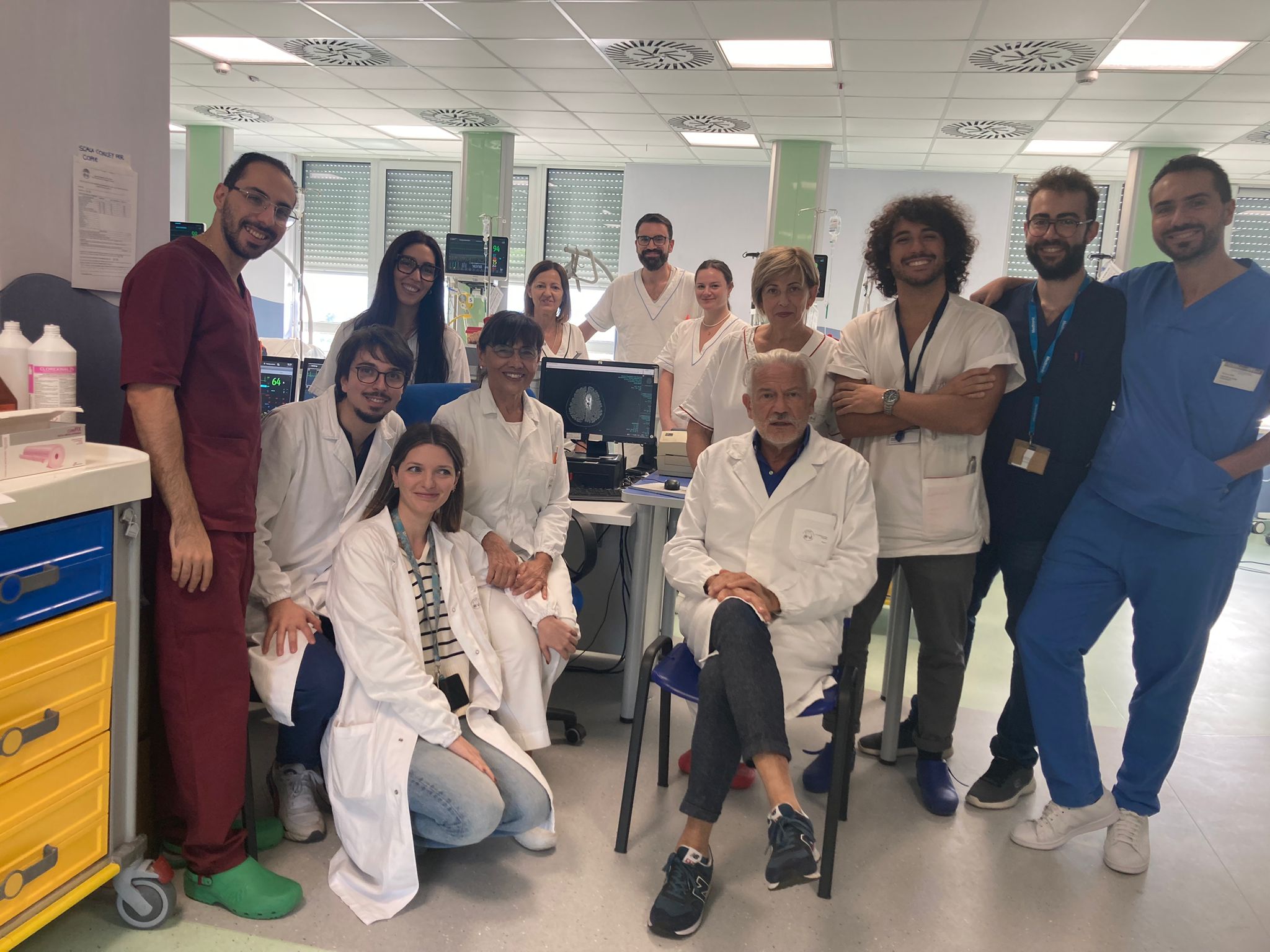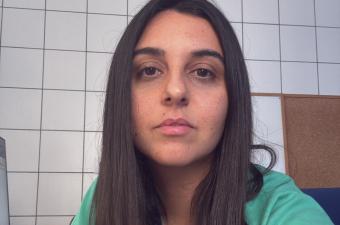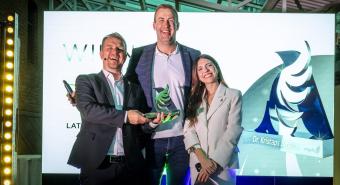
San Giovanni di Dio e Ruggi D’Aragona University Hospital in Italy’s Salerno province has a history as long as your arm. It is furthermore, as its name suggests, a history of two ancient hospitals that merged in 1898, were given new headquarters in 1923, relocated to San Leonardo in 1980, and in 2013 was integrated with the University of Salerno’s medical school whose history is even longer.
When it comes to treating acute stroke, however, we can pick up the story in 1981, the year Salerno native Dr Rosa Napoletano joined the hospital. Initially working in neurophysiology where she dealt with multiple sclerosis, cranial trauma and carotid artery disease, and later as a dedicated doctor in the Multiple Sclerosis Centre, Dr Napoletano became head of the stroke unit in 2010. Her first commitment was to start treating stroke with thrombolysis, she says.
“As a young doctor, I experienced years of great frustration about the treatment of stroke patients while I followed with interest the beginnings of new therapeutic approaches for these patients in other countries, first as treatment in dedicated structures (stroke units) and then with thrombolysis. Having the effectiveness of these therapeutic approaches verified consolidated my interest and motivated me to always keep up to date with everything supported by scientific evidence.”
Wasting no time in turning scientific evidence into practice, Dr Napoletano treated her first patient with thrombolysis that same year.
“I remember it very well. The patient was a religious teacher who had been referred to me from a peripheral hospital for right hemiparesis with dysarthria. At the time, my colleagues were all older than me and unwilling to change their approach to the disease with a therapy deemed risky.
“But I felt prepared. I had my ‘mental’ checklist, I was ready to proceed. With the help of the nurse on duty – it was the nurses who were the most enthusiastic at the beginning – we carried out the treatment, which went well.”
The integration of the hospital with the university in 2013, however, brought new challenges. “There were problems connected to spaces, roles and skills,” Dr Napoletano says. In the inevitable restructuring process, the two dedicated stroke unit neurologists were among those who preferred early retirement. Next, the inevitable recruitment process neglected to specify personnel for the stroke unit. As a result healthcare workers including nurses now rotate between the neurological unit and stroke unit, a practice that initially made it hard to maintain standards that depend upon highly motivated staff with specialised skills.
“These were difficult years,” Dr Napoletano reflects.
In 2017, however, Dr Napoletano found an ally in Angels consultant Stefania Fiorillo. She says, “I clearly remember the meeting with Stefania in 2017. She gave me the courage and support necessary to undertake a training programme involving all the players in the care chain.”
The practice of rotating medical and nursing staff made it necessary to cast a wide net. “We educated the entire hospital,” Stefania says. Further interventions included developing a stroke protocol, organising the stroke pathway according to the guidelines, simulation training, and laying the groundwork for a mechanical thrombectomy service that would get of the ground in 2018.
The number of patients treated went up, the door-to-needle time came down and in 2019, the hospital won its first ESO Angels gold award.
The next turning point came in 2020, Stefania says, with the introduction of MonitorISA, a joint project of Angels and the Italian Stroke Association (ISA) that designates two months per year for data collection. The resulting focus on quality monitoring at San Giovanni di Dio e Ruggi D’Aragona saw a significant drop in their door-to-needle time and raised the recanalisation rate, Stefania says. It raised their award status too. After winning platinum awards in the first and second editions of MonitorISA, Dr Napoletano’s team won their first ESO Angels diamond award in 2022.
Participating in MonitorISA was a logical decision, says Dr Napolitano who is also the ISA regional coordinator. “I believe that measuring ourselves is essential in order to improve the quality of our work. Psychologically, the sense of being monitored can be an incentive to act faster, but at the same time it makes us look for the most effective strategies to reduce the times, which then become part of the protocols.”
Focus on training, measure results and bring your commitment and passion, is Dr Napoletano’s advice to underperforming hospitals of which the region has several. Campania (where Salerno is located and of which Naples is the capital) is a tough region for stroke care, Stefania says. It has the second-highest stroke incidence after Sicily, but no dedicated health authority and no stroke network.
And although emergency transport connections are expected to improve, for now San Giovanni di Dio e Ruggi D’Aragona remains a hub without spokes.
“It is very important to connect with other hospitals on the map,” Stefania says. “But Salerno is very big and that makes it difficult.”
A shortage of neurologists throughout the region has also hampered progress, Dr Napoletano says. In Salerno it is a crisis exacerbated by the reluctance of neurologists to serve in outlying hospitals. But they now have the capacity to share neuroradiology images with hospitals in remote locations, and a soon-to-be-activated telestroke platform will usher in an experimental phase for thrombolysis via telemedicine involving these hospitals.
The past few years have seen many positive changes, Dr Napoletano says. The awards have enhanced teamwork and improved relationships. More people, including more healthcare professionals, know about possible treatments for stroke. There is a more active collaboration with the providers of pre-hospital care. More students are specialising in neurology and some of them have shown an interest in vascular pathology. Primary centres in Salerno province are finally overcoming their reticence towards treating acute stroke. And the unflagging enthusiasm and collaborative spirit within the neuroradiology team has been an inspiration throughout.
But if you ask Dr Napoletano who the real heroes of the stroke unit are, she doesn’t hesitate.
“The nurses, especially in the early years. At the time, not all of them had sufficient knowledge which made them eager participants in the training and enthusiastic about the results. They attend to the patients, day and night, and their sometimes even joyful support was fundamental to consolidating the treatment results.”
Dedicated medical and nursing staff for the stroke unit remains at the top of her wishlist, but by “dedicated” Dr Napoletano means a team allocated to a specific purpose, not one more devoted to their task. Losing specialist personnel was difficult, she says, “but their loss was made up for by the commitment of those who spontaneously became passionate about stroke.”


